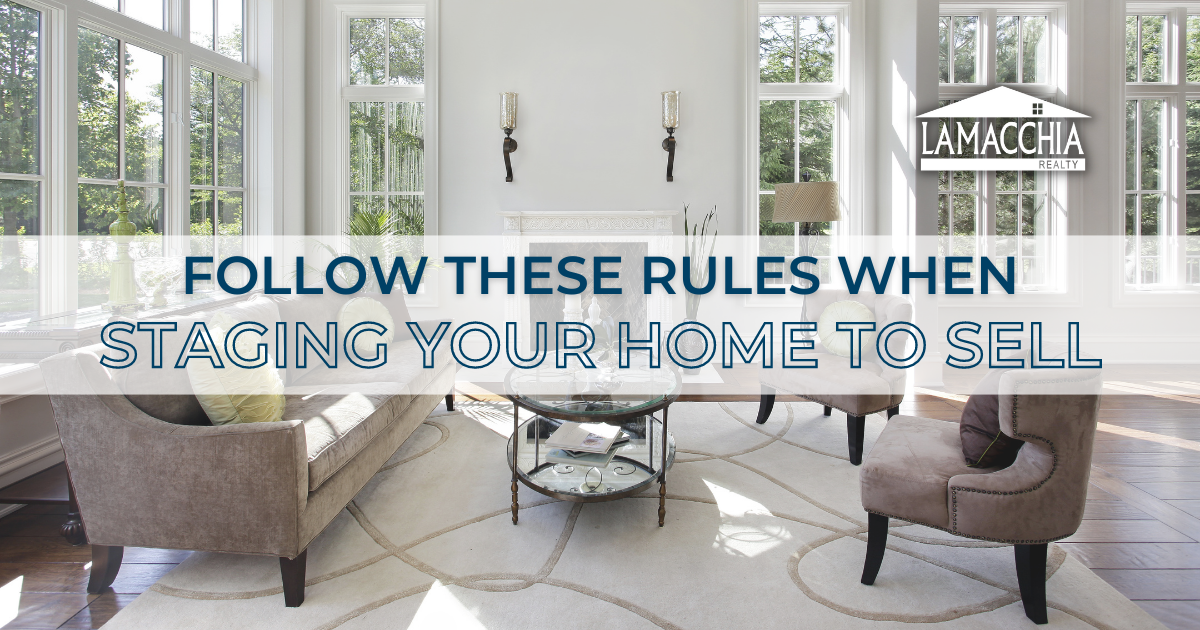
 There is an art to selling homes. A large portion of that pertains to your agent’s skills and techniques, but don’t discount what the sellers can do as well. Once a seller has the right agent, most likely, the next task will be to prepare the home for sale by staging it for showings and pictures.
There is an art to selling homes. A large portion of that pertains to your agent’s skills and techniques, but don’t discount what the sellers can do as well. Once a seller has the right agent, most likely, the next task will be to prepare the home for sale by staging it for showings and pictures.
Hiring a professional stager is an option but it isn’t a necessity. If there is furniture in the home it can be staged. The property itself needs to be prepared, and you can read our recent article on getting a house ready for a spring sale. But once the house is prepped, usually by deep cleaning, making repairs, and updating paint on the walls, it’s ready to be staged.
Staging essentially means that the home will be set up to visually please those viewing the home and make it more likely to sell. Staged homes are more likely to sell because the overall layout of the home is maximized by strategically placed furniture and decor, making potential buyers feel more comfortable and able to picture their belongings in there. Here are 3 tips to save you from having to spend lots of money on a professional stager.
1. Declutter
You need to go through every room in the house, including the basement, attic, and garage, and get rid of superfluous items- anything that is overkill needs to go. This will not only make the space seem cleaner and larger, but it’ll also work to your benefit when it comes time to move because you’ll already be organized. You’ll need one pile for donations, one pile for packing items you want to keep but don’t need on display, and one for trash. Everything else stays out.
Take your personal items, wrap them, and box them up. Get rid of anything that’s broken, has missing pieces, and that’s non-functional. Donate items in working, gently-used condition that you don’t need and don’t want to lug into your new home. Keep out items that serve a purpose. Nice wall art, plants, decor, and furniture need to be neutral, not personal, and they need to help the viewer understand how each room can look and feel when they move in.
Remember, less is more. It is often the case that rooms have too many pieces of furniture. Pack away the extra bean bag chairs and side tables. Recycle the old magazines and pack away the magazine rack. Fold away the Disney kids’ table in the dining room. Less furniture makes the rooms seem larger and allows for better flow when buyers are walking through.
2. De-Accessorize
Now go through your home and make the same piles of your accessories. Trash old notes, lists, papers, and magazines. Doing this makes space for the furniture and neutral decor to speak for themselves. Pack away kids’ artwork and trophies, clear away bottles and medicines from the bathroom sink, and pack books and family photos into boxes for moving. This is especially important in order to depersonalize the home. You don’t want buyers feeling like they’re visiting someone else’s home, you want them to feel like they’re in a clean slate, and to do that envision a furniture store that is decorated but not packed with knick-knacks or personal items.
What is left after the accessories have been sorted into the pack away, the trash and the donate piles will be what is used to stage.
3. Rearrange & Clean
Once you’ve gone through every room in the house to declutter and de-accessorize, you’re left with what buyers will see in pictures and for showings. Moving all this stuff around and packing does create dust, so make sure you do one very deep clean of the home. Remove all the dust, cobwebs, grime, and stains from the floors, surfaces, and walls, and then you’re ready to rearrange.
In each room, you’ll have to organize the furniture so the room seems bigger and so it’s easy for viewers to walk through. Symmetry is important in making people feel that a space is balanced. Place the larger items against the walls and the smaller items in the center. Decorative items can be situated in groups of threes- envision a triangle and vary the heights. Wall art should be appropriately scaled to the space; anything too little looks awkward and anything too big looks out of place. Make sure the overall appearance is neutral with a neutral color palette so buyers have an easier time imagining their belongings in the home.
Multiple light sources add warmth and brightness to rooms- use white or clear bulbs instead of ones with yellow or blue hues. Well-staged rooms have layers of light: create ambiance by using overhead lighting, table lamps, and accent lights. Remember to light the outside of the home, too. Most buyers work during the day and do not have the chance to drive by a house except at night. A well-lit home will give the home exterior a warm and inviting appearance.
The final touch should be little accents in each room. Instead of stacking folded bath towels, roll them and tuck them in a pretty basket. Set the dining table and make sure the kitchen smells of something delicious. A vase of flowers on the kitchen island and in the front entry goes a long way to make people feel welcome. Tired cabinets can feel instantly refreshed if you change out the hardware. Add a few complimentary throw pillows to the couch and to the beds to give the home a plush feel.
